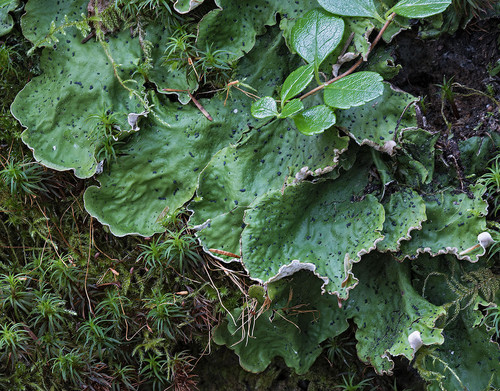Click on Characteristic name for explanation. Click on image for larger version.
|
Peltigera aphthosa
| Overview
| | PNW Range: | | | West side | Uncommon
| | East side | Common
| | Immediate coast | Uncommon
| | Alpine or subalpine | Common
| | Habitat: | Common in more continental climates east Cascades but largely replaced by P. britannica in low to mid-elevation moist forests west Cascades; frequent on roadcuts and in open outcrop and talus areas.
| | Substrate: | Soil, forest floor, and mossy rocks.
| | Comments: |
| | Synonymy: | none
|
|

Habit
|
|
|
|
|